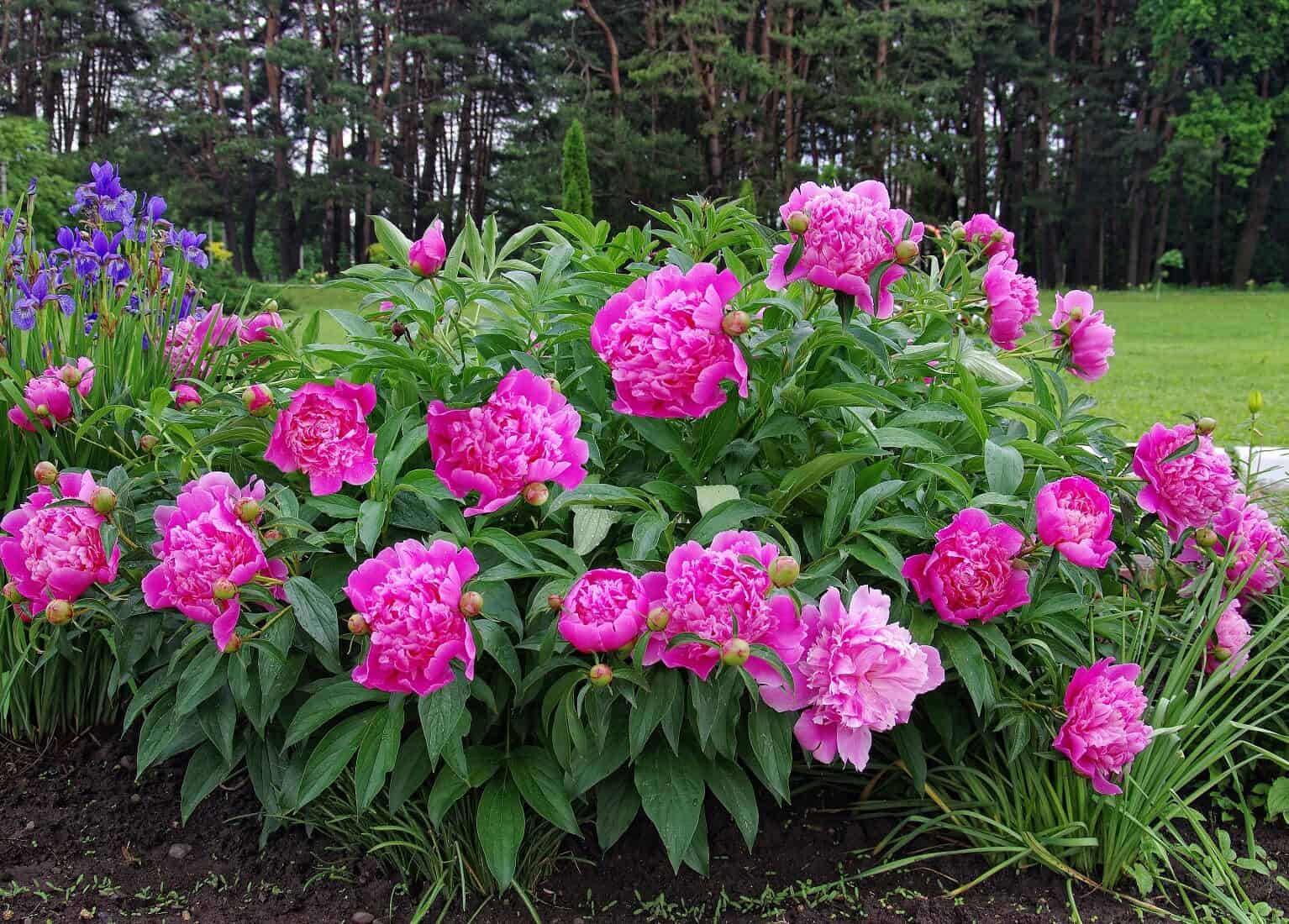If you’re looking to stimulate not only your visual sense but your olfactory sense as well, then you’ll find this list of thirteen most fragrant flowers quite epic. While you’re free to plant them anywhere around your house or even in containers, I strongly recommend you plant them near your dining area.
You’ll thank me later:
In today’s post, you’re going to read what I consider to be some of the most fragrant flowers, their suitable growing zones, fragrance intensity, and a brief description of suitable growing conditions.
With this information, you’ll be able to plant the most aesthetically pleasing gardens or landscapes, yet functional in every way. Besides, you’ll enjoy pleasantly scented breezes wafting from the direction of the garden making your mealtimes truly magical.
Interested yet?
Let’s begin:
List of the Most Fragrant Flowers to Grow
1. Gardenia (Gardenia jasminoides)
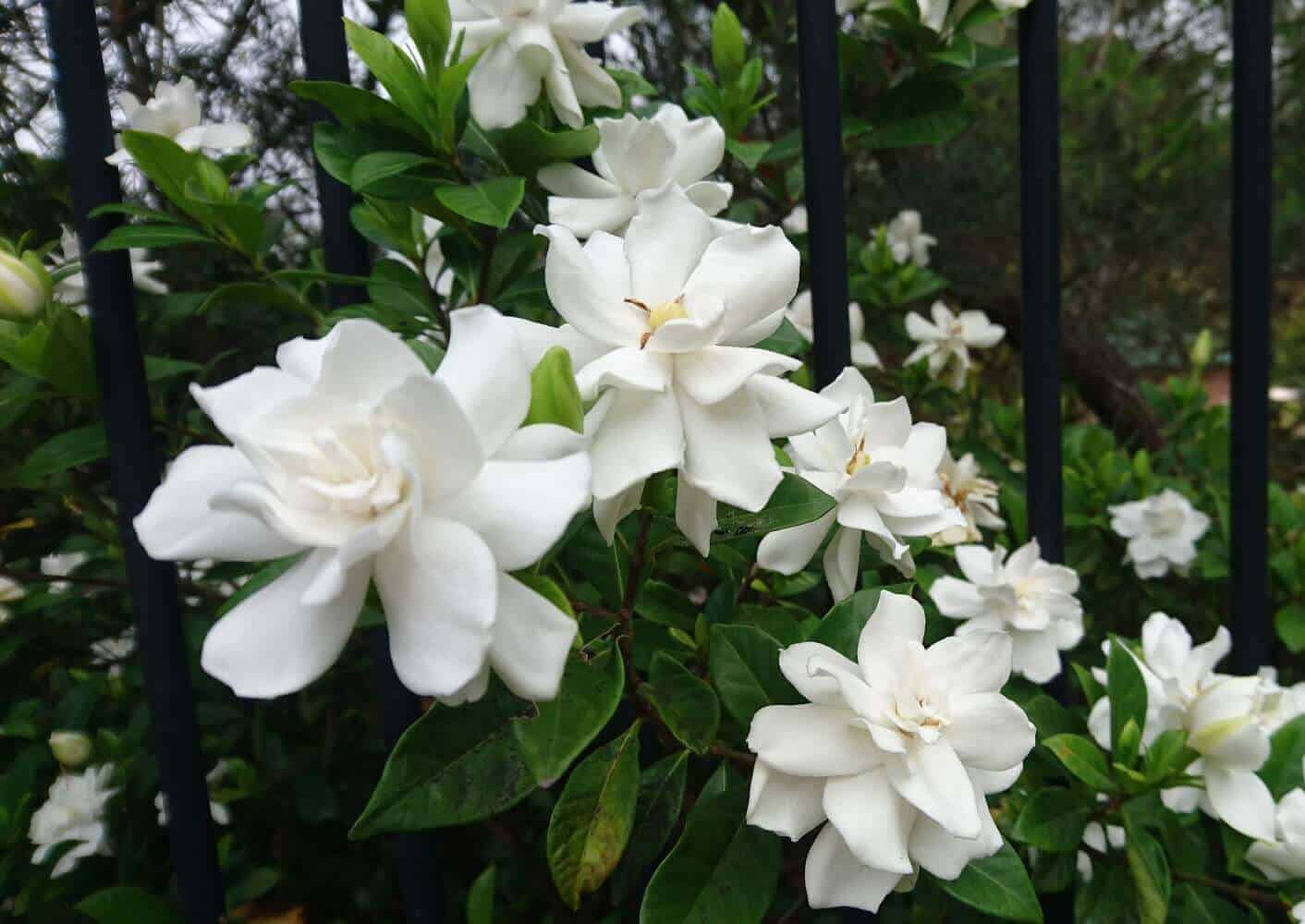
Gardenias are evergreen plants that can suitably grow in zones 8 to 11 with other newer varieties performing well in zones 6 and 7.
The flowers are intoxicatingly fragrant, particularly on humid summer evenings. To top it up, are the high-gloss dark green leaves that remain intact year-round.
You should plant gardenias where people will notice the beauty and fragrance of these plants. The flowers open over a long period, from May through June, and sporadically throughout the summer.
We’ve written an elaborate guide on how to grow gardenias – if you want to learn more.
2. Jasmine (Jasmine spp.)
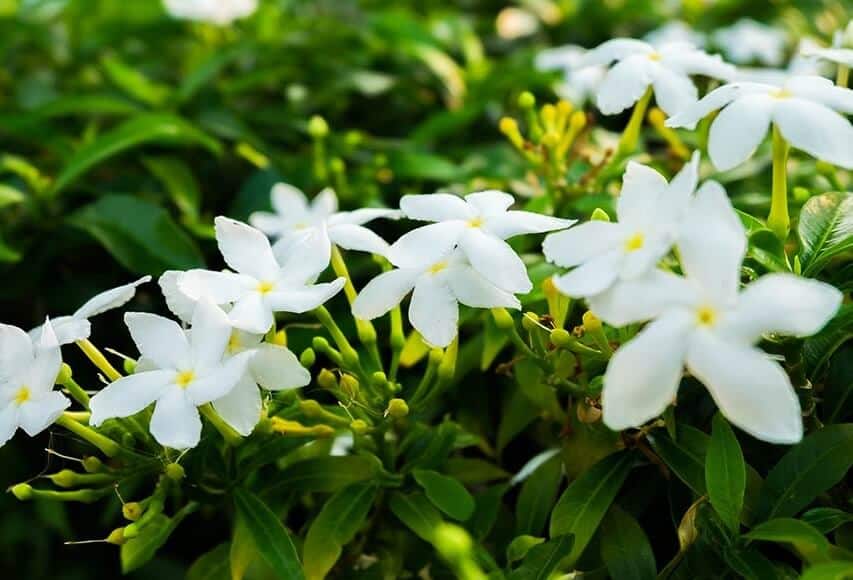
The Jasmine plant is an intensely fragrant vine that is grown widely. Its versatile nature makes it a great plant for many settings. Despite their diminutive size, the flowers pack a huge punch of sweet fragrance and can easily perfume your entire yard.
You can grow these vining beauties in zones 9 or 10 with the most cold-hardy species, winter jasmine (Jasmine nudiflorum) growing successfully in zone 6. Plant jasmine in full to partial shade for better flowering.
The most popular fragrant jasmine include the star jasmine (Trachelospermum jasminoides), Royal Jasmine (Jasminum rex), Pink Jasmine (Jasminum polyanthum), Common Jasmine (Jasminum officinale), Angel Wing Jasmine (Jasminum nitidum).
3. Peonies (Paeonia lactiflora 'Sarah Bernhardt')
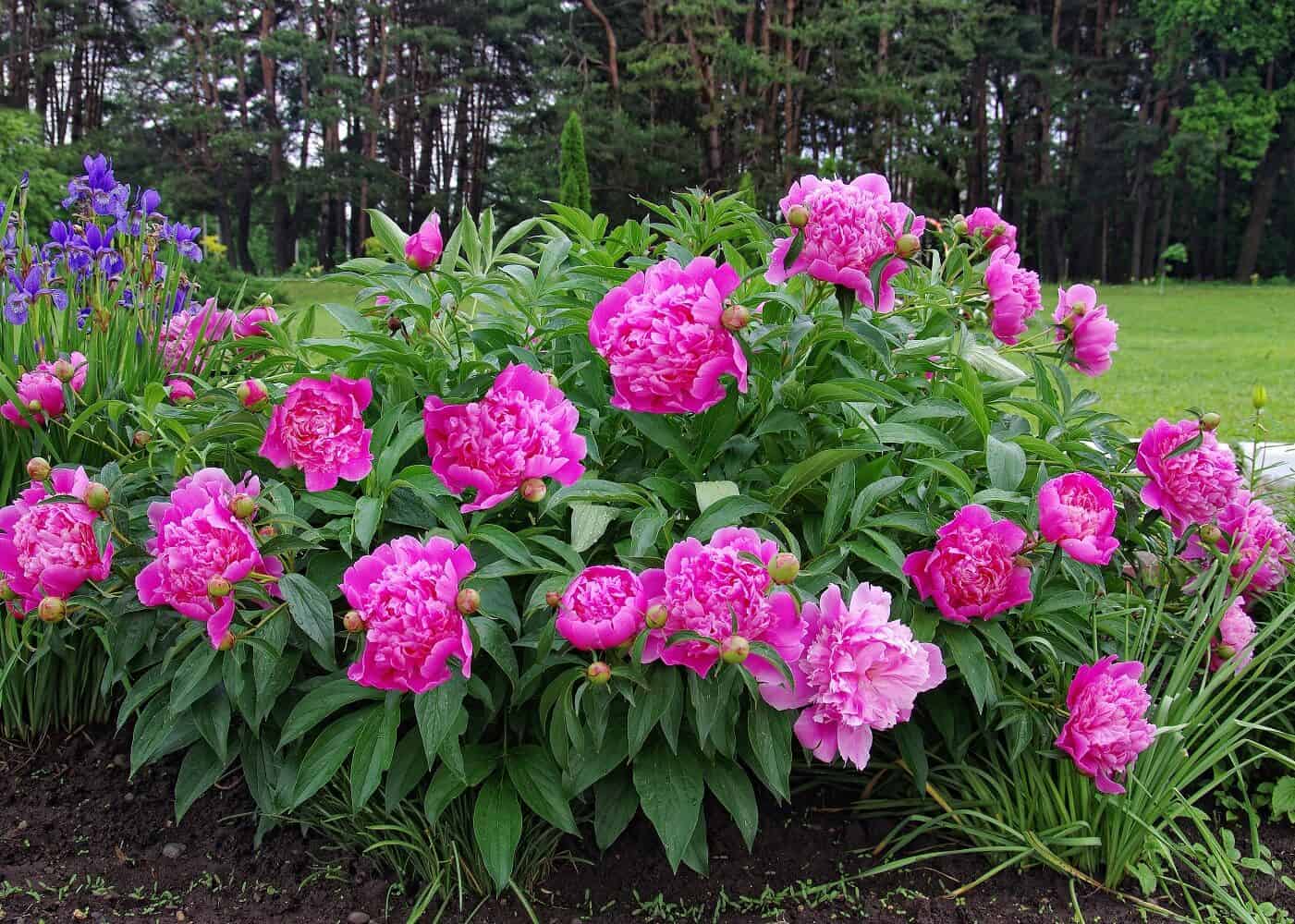
While not all peony species are fragrant, those that are can be surprisingly super fragrant. The fragrance ranges from sweet and rosy to citrusy and spicy – making them ideal to grow in your home entrance as well as near the dining area.
The double form of white and pink peonies tends to be the most aromatic. Some semi-double and anemone-formed peonies boast an attractive perfume as well. However, most single and red peonies do not have a scent—though there are a few exceptions.
For the best results, grow your peonies between October and March in a sunny location with good windbreaks such as a privacy hedge or privacy screen of trees. Peonies' flowers are easily knocked down by wind since they can be quite heavy. These plants thrive in zones 3-8 and 9 with extra effort.
4. Lemon Scented Geranium (Pelargonium spp.)
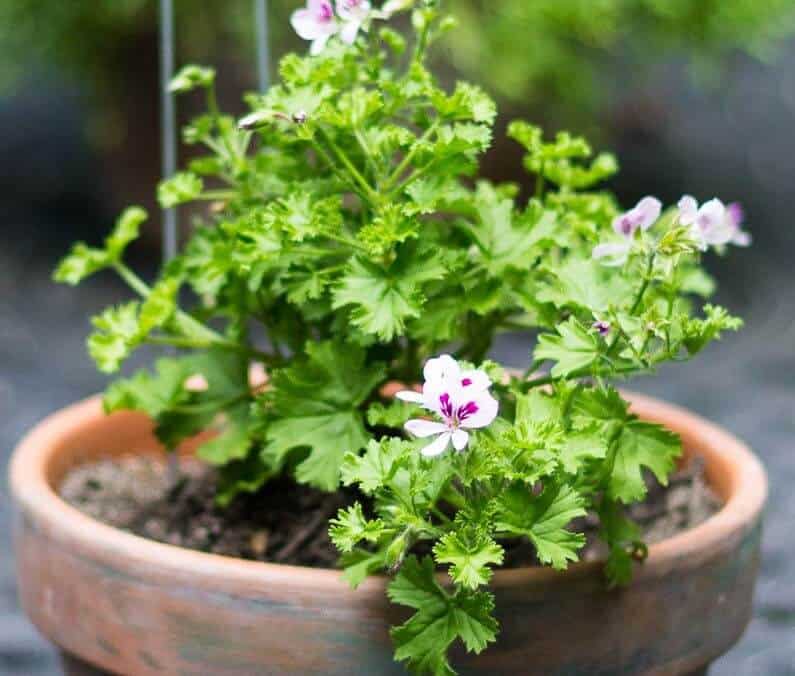
While the garden geranium is well-known for its bright flowers and the occasional variegated leaves, there’s another great alternative (lemon-scented geranium), which you can grow for its aromatic foliage instead of its flowers.
Their foliage is highly fragrant and smells like mint, rose, lemon, cinnamon, or even chocolate. The flowers are less showy, on the whole, but they're attractive (if rather small) and may be white, pink, red, lavender, or—in at least one case—yellow.
You can plant these scented geraniums in companion with herbs, flowers, and other vegetable crops to create the ultimate edible landscape. There are several lemon-scented geranium varieties such as Prince Rupert, Lemon-scented, Mable Grey, Lemon Balm, and Rose Bengal.
All these varieties can be grown successfully in zone 9 and 10. Here’s a detailed guide on How to Grow and Care for Geraniums.
5. Lily of the Valley (Convallaria majalis)
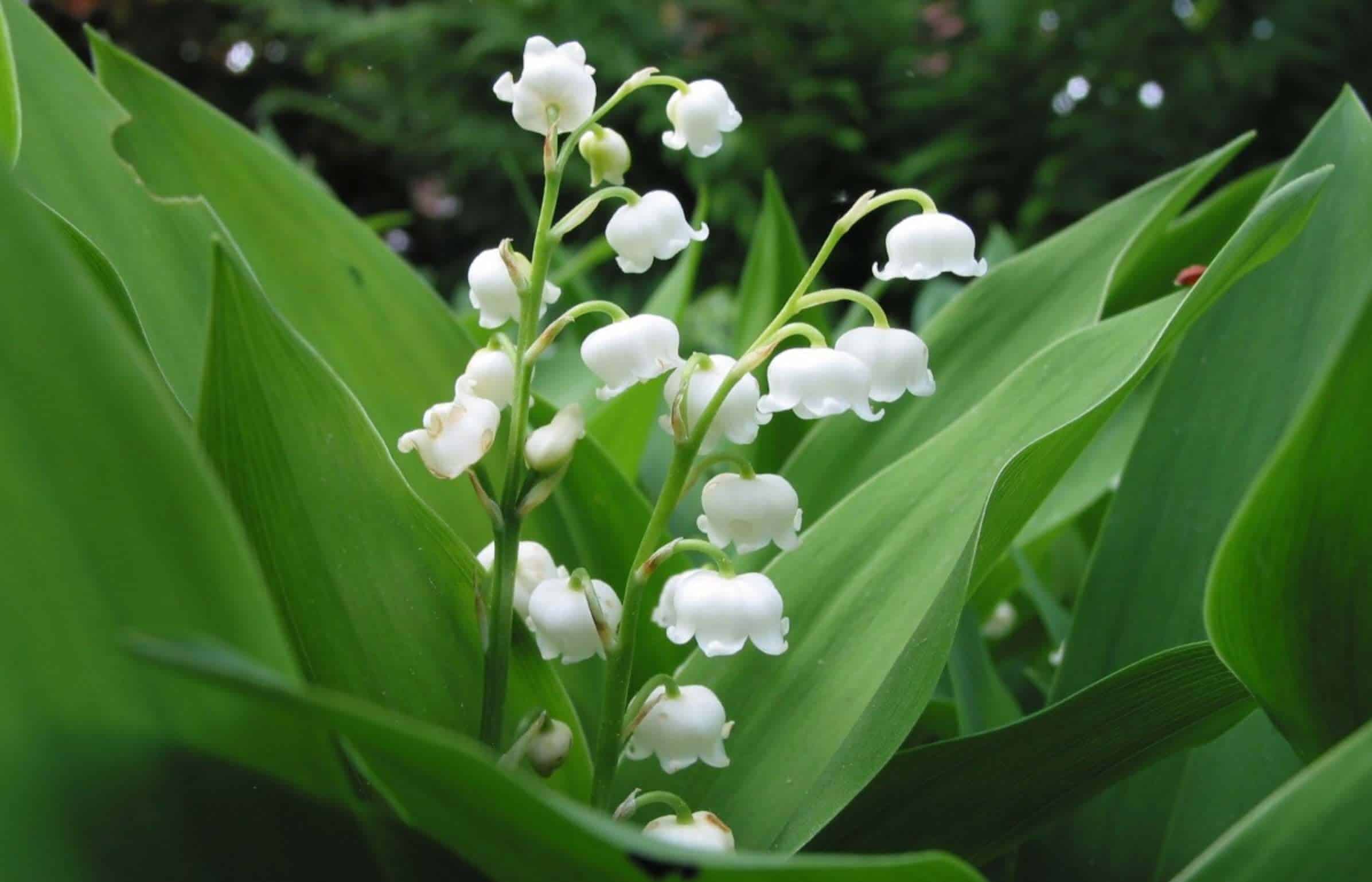
Lily of the Valley is one of the most fragrant flowers which produces a signature scent that serves as a signal for spring. One of the things I love about this plant is that it will thrive and bloom in the heavy shade even under deciduous trees and shrubs – making it a perfect shade flowering perennial.
As a matter of fact, Lily of the Valley is an ultra-hardy perennial that prefers cold weather, which encourages better flowering in the spring. Besides, the medium-green foliage stays lush and glossy all season long.
The only drawback is that the plant takes a bit longer to start flowering from you plant it. But this time may be relatively shorter if you’re growing in zones 3-8.
6. Rose 'Fragrant Cloud'
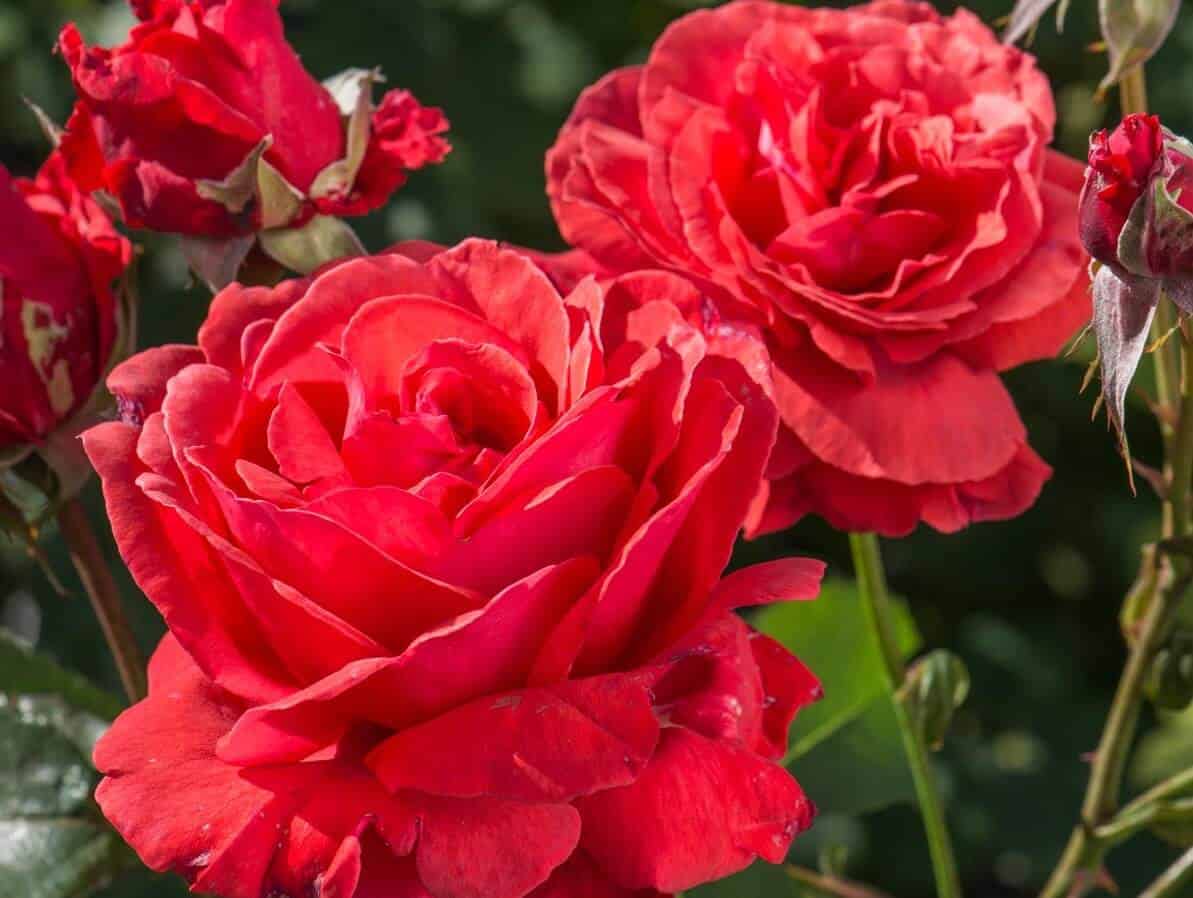
The ‘Fragrant Cloud’ Rose as the name suggests, is not only one of the most fragrant flowers but the most scented in the roses family. You can easily smell it standing a few feet away in the earlier parts of the day before the fragrance fades in the afternoon.
This makes it an excellent choice for flower beds, borders, or containers that can be placed in patios, balcony or indoors.
Unlike most garden roses, this rose is recognized for its incredibly powerful perfume. It’s a lovely Hybrid tea rose with very large, full, high-centered, bright coral-red flowers. The eye-catching blossoms are strongly scented, a delightful mix of citrus, damask, fruity, spice fragrance.
Prolific they bloom in flushes from spring to fall. Borne mostly solitary, they stand out against the splendid foliage of glossy, dark green leaves. They flourish in zones 5 – 10.
7. ‘Stargazer’ Oriental Lilies
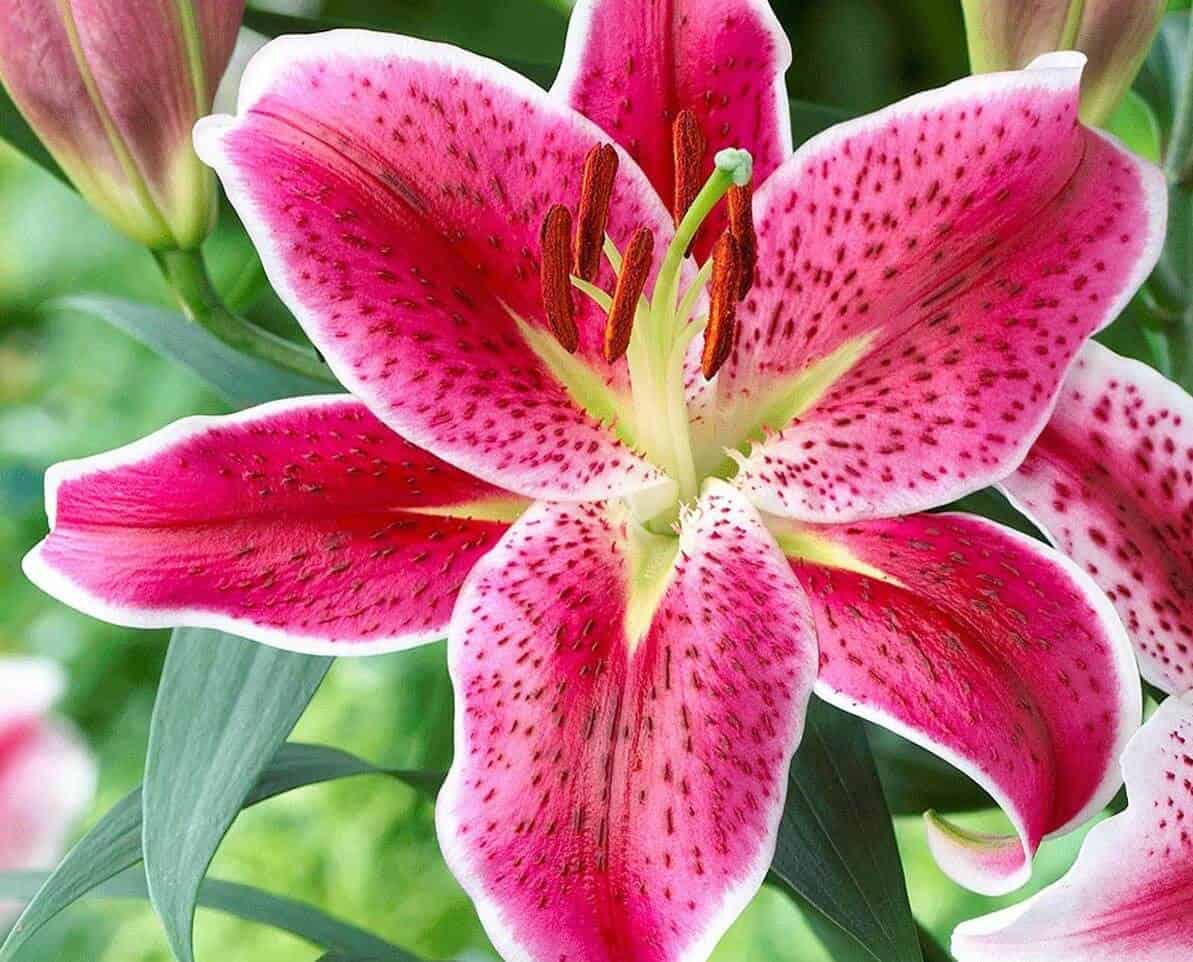
Of all the types of lilies, Oriental lilies are among the most intensely scented, from the first blossom opening until when the last petal falls. The ’Stargazer’ variety is quite popular. The perfume produced by the flowers is particularly strong in the evening which coincides with dinner time.
They have broader leaves than some other varieties of lilies and thrives in zones 4-9. The foliage and flowers are deer and rabbit resistant. Therefore, you don’t have to worry about these intruders feasting on your lilies.
The oriental lilies come in various shades of pink and purplish red, in addition to white and creamy yellow. The petals of some varieties are spotted and recurving, while others are not
8. Freesia (Freesia spp)
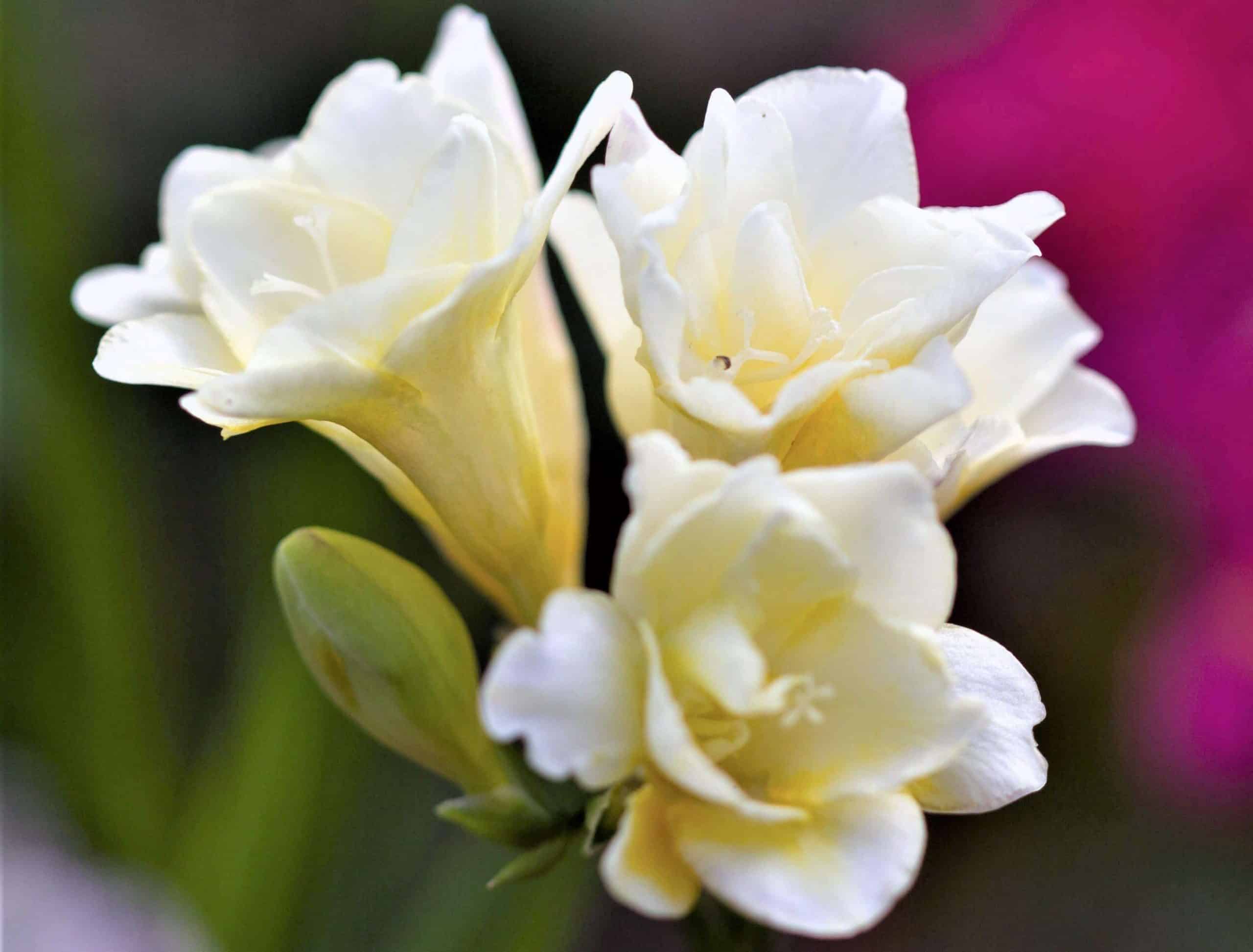
Freesia plants grow well in zones 9-10 and are mostly available in a rainbow of colors, including purple, pink, yellow, and red. However, when it comes to the intensity of the scent, the red and pink flowers have the headiest fragrance.
When you plant Freesias from bulbs, you should expect the blooming to start in about 12 weeks which is pretty fast compared to some other plants on this list like Lily of the Valley. After blooming, they’ll enter into dormancy, and therefore, you shouldn’t discard them just yet.
Furthermore, Freesia stems are thin and can’t always support the weight of the flower heads, especially in varieties that produce double blooms. You should support the plants using a grow-through staking system with a grid.
9. Fragrant Plumeria or Frangipani
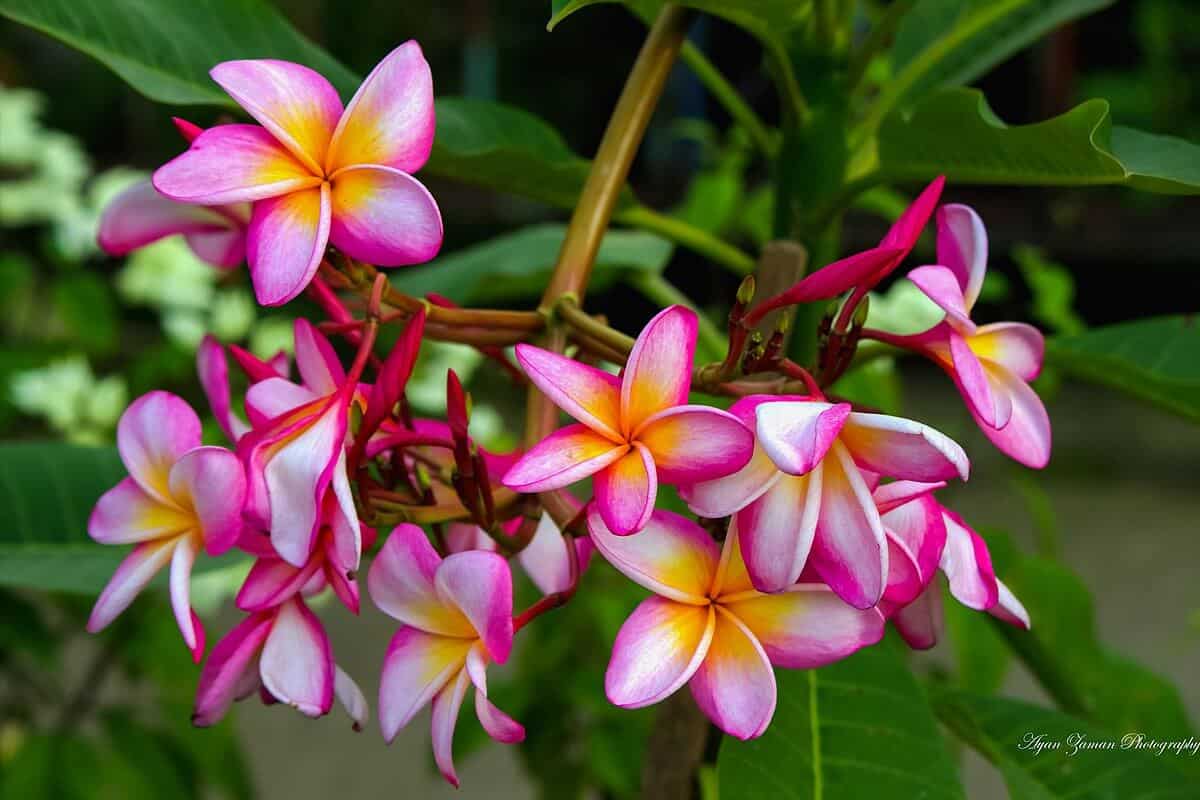
The Plumeria flowers are amongst the most fragrant flowers in existence, with a scent including hints of jasmine, citrus, and gardenia. Since they are pollinated by night-flying sphinx moths, the flowers begin to release their fragrance in the evening, but they can still have a lovely floral scent at other times.
You can grow these plants in zones 10 and 11. In warm tropical climates, plumeria is used exclusively as landscape plants. However, in cold areas, they’re best grown in containers to be moved outdoors during warm weather.
You can also place them on porches or patios where you can enjoy their delightful fragrance in the summer and bring them indoors when the weather cools in autumn and night temperatures drop.
10. Wisteria (Wisteria spp.)

Wisteria is a perennial vine with wonderfully fragrant flowers, often lavender, that grow in clusters, similar to grapes. However, this vine is a fast and aggressive grower—often reaching 30+ feet long—and is known to grow quite heavy.
One species is particularly notorious – the Chinese wisteria (Wisteria sinensis) which you should avoid because it’s able to damage local ecosystems due to its rampant growth and ability to thrive in several different conditions. At least don’t plant them too near to your home.
If you must incorporate flowering Wisteria vines into your garden, get a non-invasive type such as the American wisteria (Wisteria frutescens) and evergreen wisteria (Millettia reticulata). These two will provide a feast for your senses of smell.
Caution: Wisteria plants are poisonous to pets and some species can be very invasive. You should check with your local extension officer or nursery for more information.
11. Chocolate cosmos (Cosmos atrosanguineus)
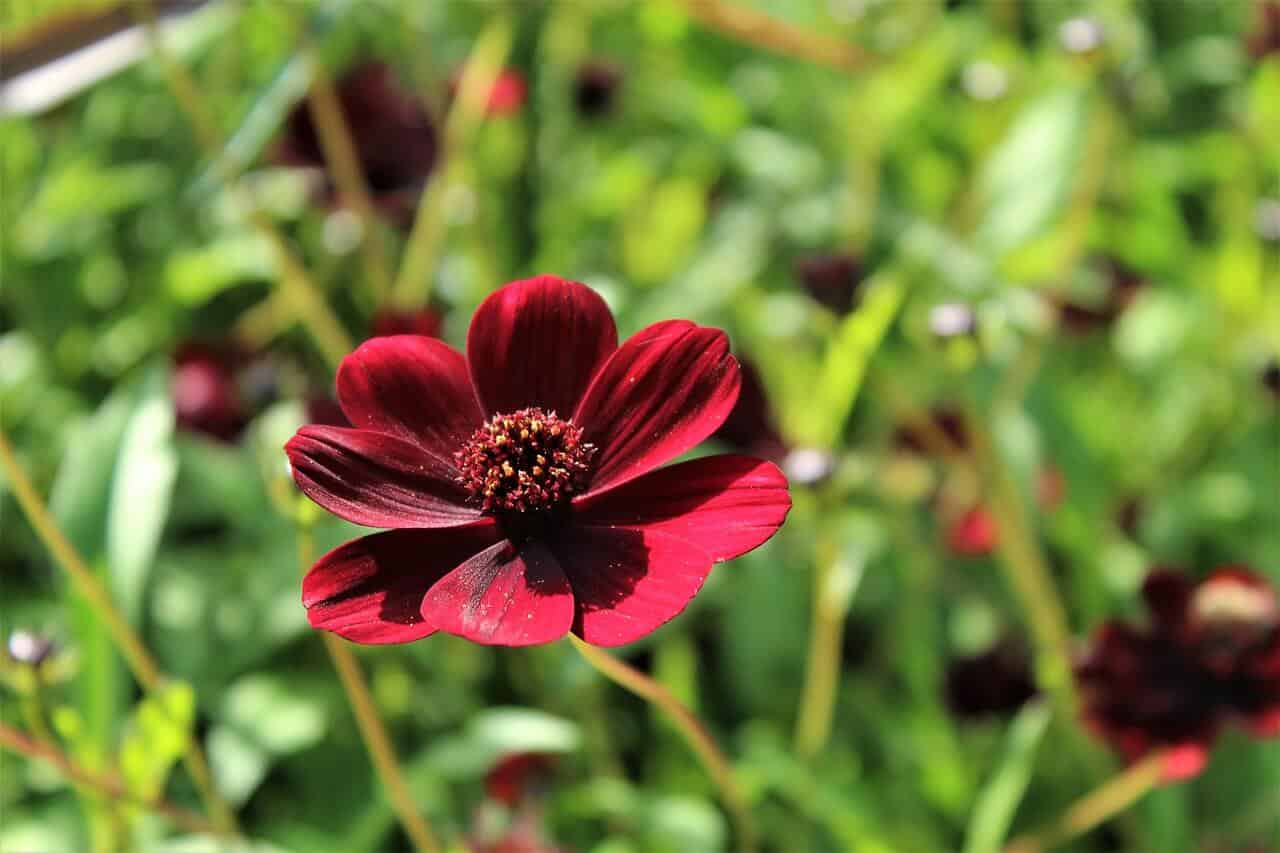
If you’re looking for chocolate-scented flowers that grow well in zones 7-11, then you need to check out Chocolate cosmos plants! These beautiful plants have dark red-brown, sometimes almost black, velvety flowers on long, slender, reddish-brown stems and bloom from early summer to autumn.
They are relatively easy to grow, make wonderful cut flowers, and attract butterflies. If you want to fully enjoy their color and scent, then consider growing your Chocolate cosmos plants in containers and borders.
Learn how to grow and care for the Chocolate cosmos.
12. Lavender (Lavandula x intermedia)

Lavandin is a very unique variety of lavender that grows successfully in zones 5-9. They are extremely fragrant with a popping light purple color. In fact, the most fragrant Lavender plants of all are the Lavandin (Lavandula x intermedia).
However, several cultivars of English Lavender (Lavandula angustifolia) are also prized for their delightful scent. If you want to learn how to grow lavender, here’s a great resource to help you.
13. Mock Orange (Philadelphus coronaries)

The Mock orange is a dense, rounded, suckering, deciduous shrub with stiff, straight, ascending branches that grow well in zones 4-7. Its pleasantly arching branches bear abundant clusters of very fragrant, cup-shaped, white flowers.
This plant is named for the somewhat citric aroma of its white flowers that blossom in late spring to early summer. It can become a fairly large shrub and a bit leggy if not pruned, and the branches tend to weep more as they age.
Grow Mock orange in moist well-draining soil with full-sun to part-shade.
Conclusion
You’ve read through some of the most fragrant flowers we have at our disposal today. I hope one or two of them have piqued your interest.
While there may be more, these are the ones that will help you to enjoy pleasantly scented breezes wafting from the direction of the garden making your mealtimes truly magical – when you plant them next to your dining area.
Of course, you’re free to plant them anywhere else you like.
Back to you!
